Abstract
This article continues the report of a study at the St Louis Comprehensive Neighborhood Health Center in which definitive blood lead levels were routinely determined in pediatric patients younger than 5 years of age. Data on changes during the 1980s in population, housing, and soil lead levels also are provided for possible correlation with changes in blood lead levels. From 1976 through 1993, there has been a progressive decline in annual mean blood lead levels and in the percentage of patients at several ranges indicative of different degrees of risk for brain damage. Comparisons of blood lead levels in residents of other neighborhoods in the city of St Louis show that most predominantly black neighborhoods and a single predominantly poor white neighborhood are particularly high-risk areas. In the study catchment area, the total population has decreased but the number of children younger than 5 years of age has increased. The latter has resulted in about a doubling of admissions to our health center in 1993. There also has been a decline in occupied housing units, an increase in unoccupied units (probably unfit for habitation), and the demolition of more than 6700 units. There also has been a remarkable citywide reduction in soil lead levels, somewhat more marked in the study catchment area than in some other areas of the city. The reduction in the lead burden in children in the study catchment area appears to be associated with the decline in housing units and the decline in soil lead levels.
Full text
PDF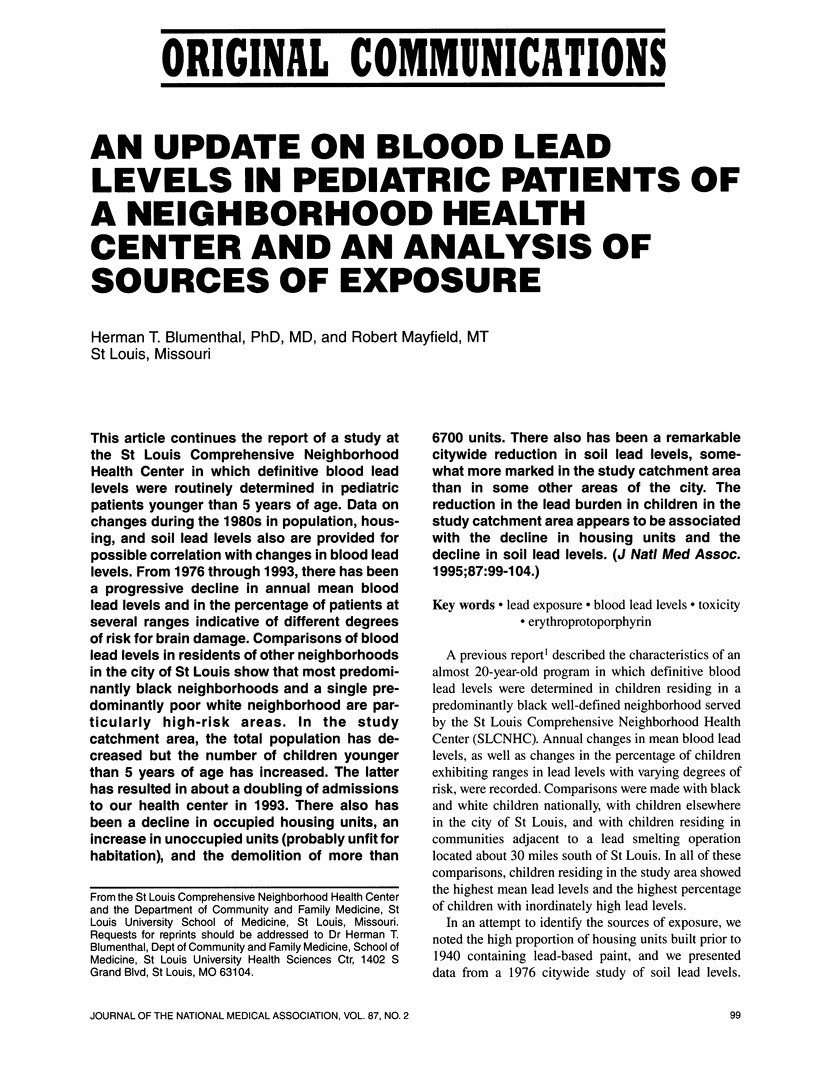
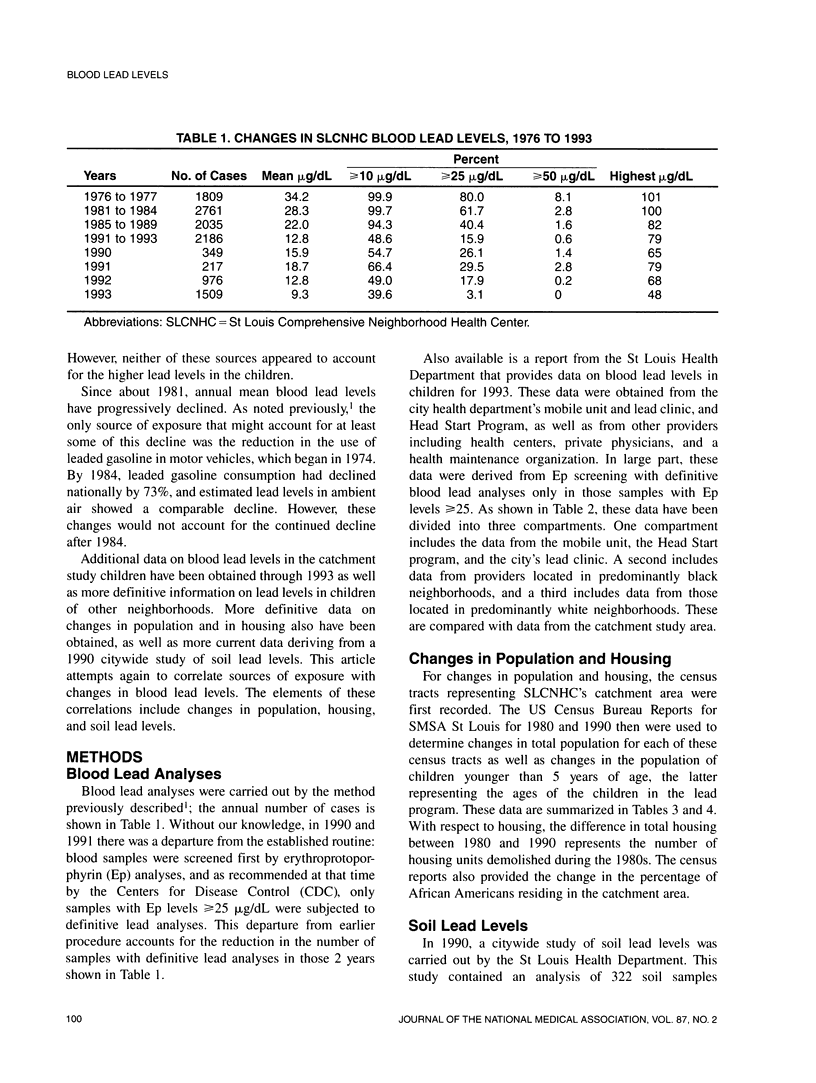
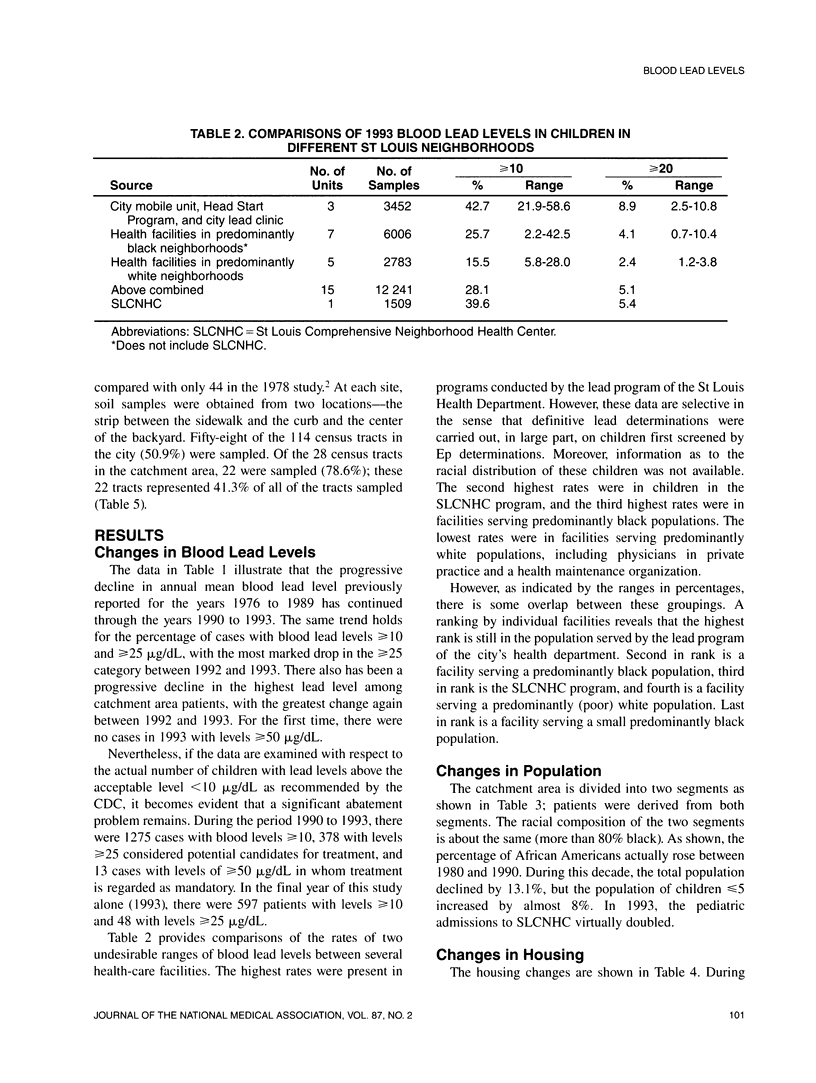
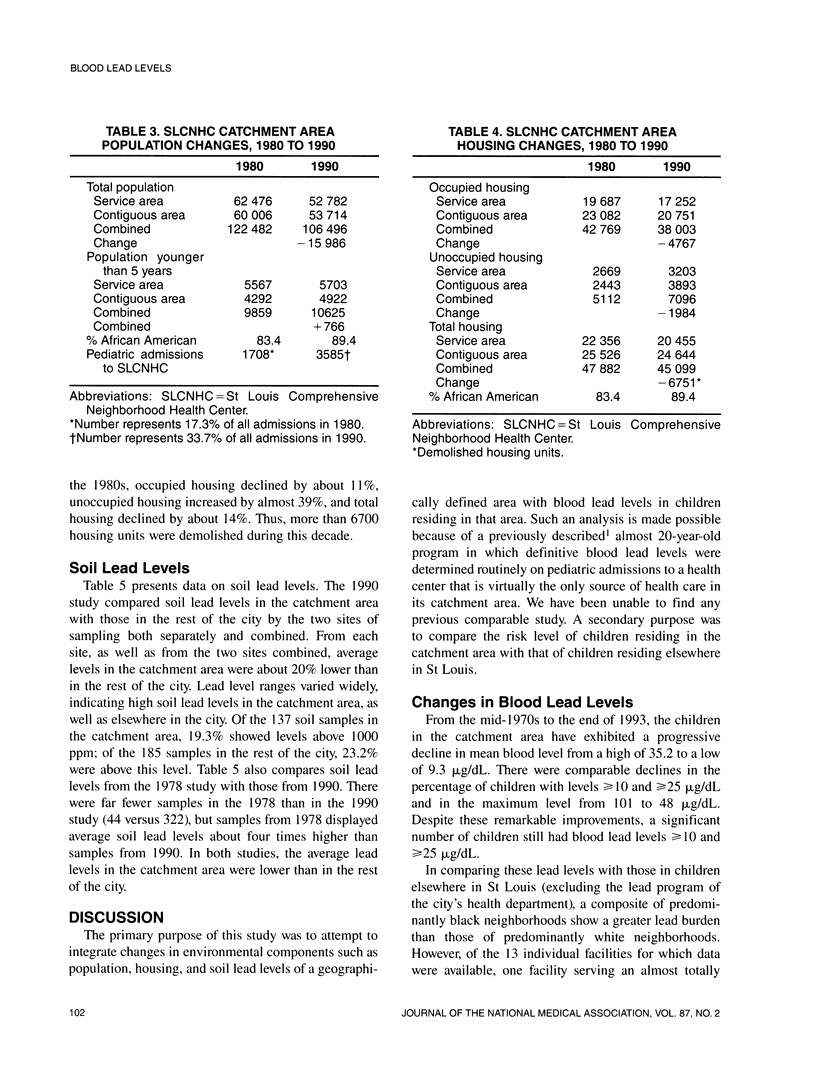
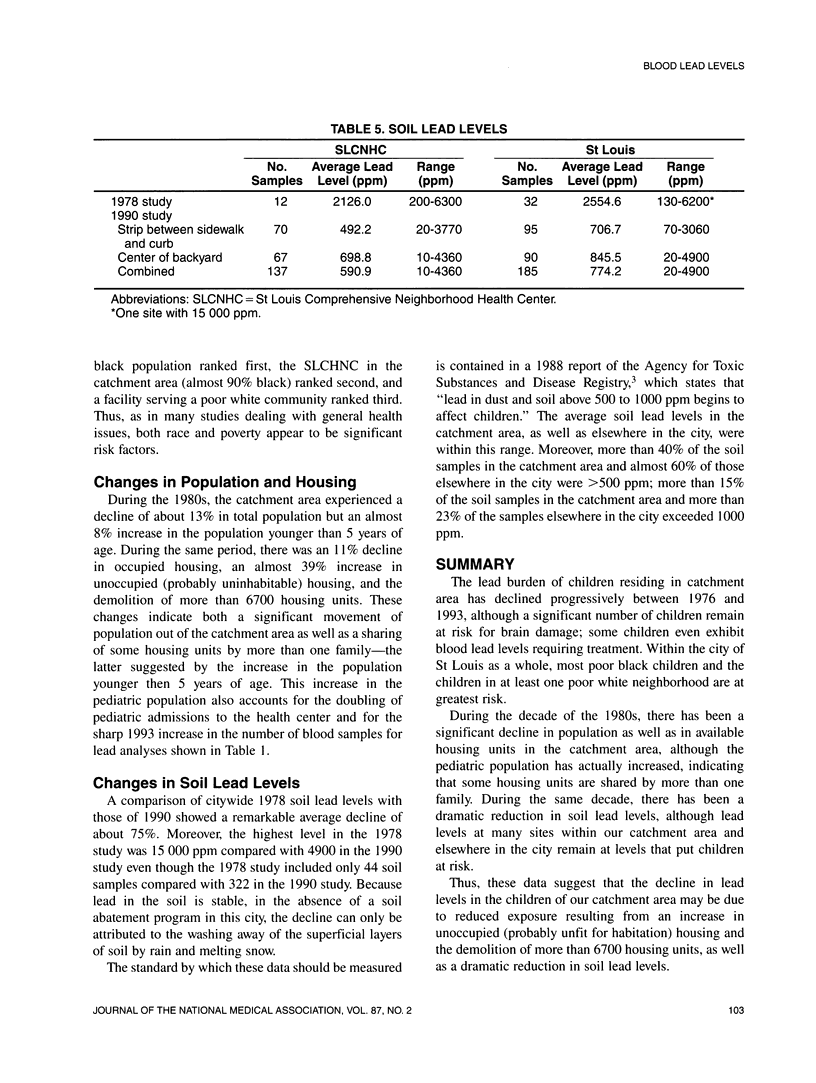
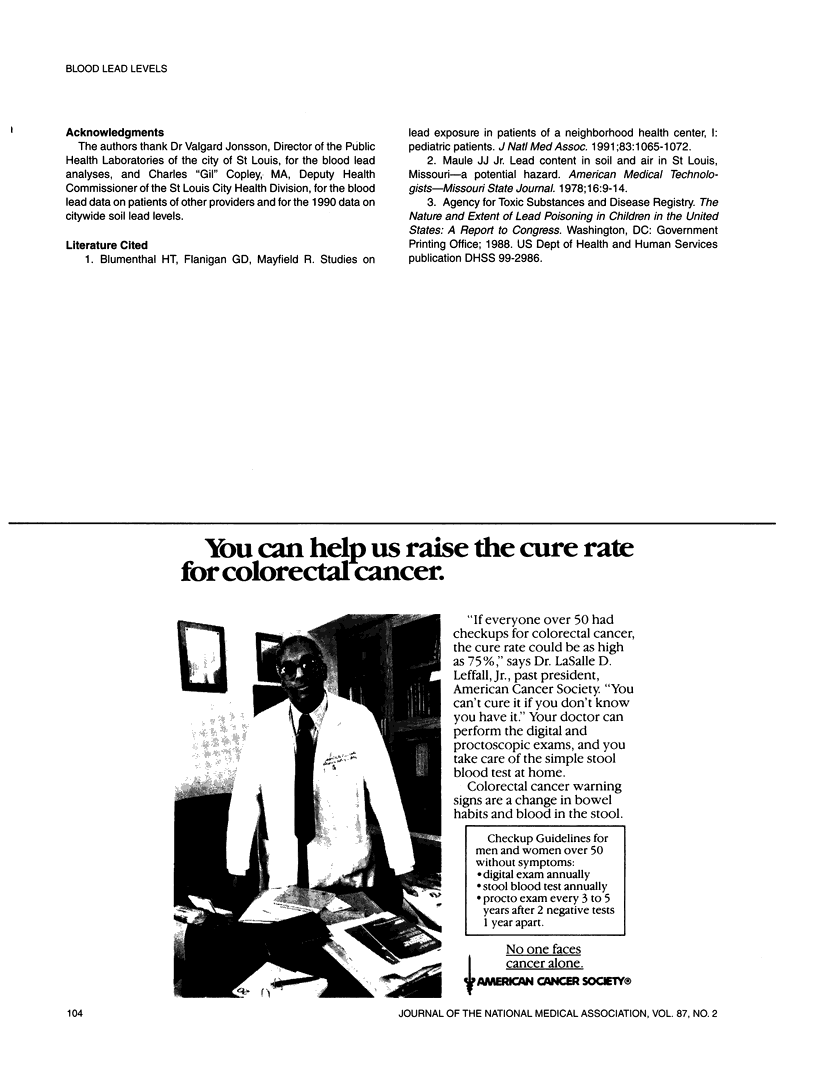
Selected References
These references are in PubMed. This may not be the complete list of references from this article.
- Blumenthal H. T., Flanigan G. D., Jr, Mayfield R. Studies on lead exposure in patients of a neighborhood health center: Part I. Pediatric patients. J Natl Med Assoc. 1991 Dec;83(12):1065–1072. [PMC free article] [PubMed] [Google Scholar]


